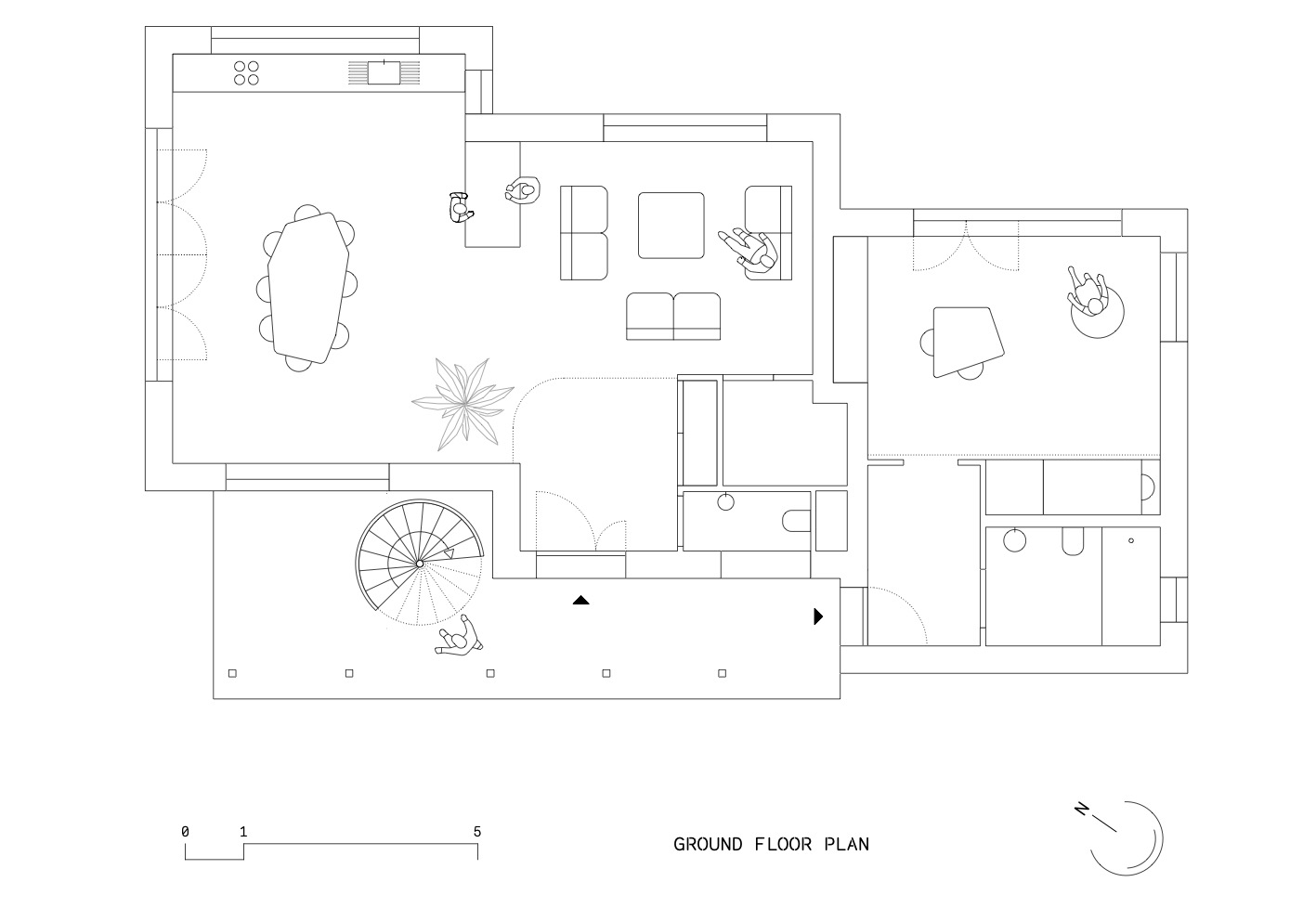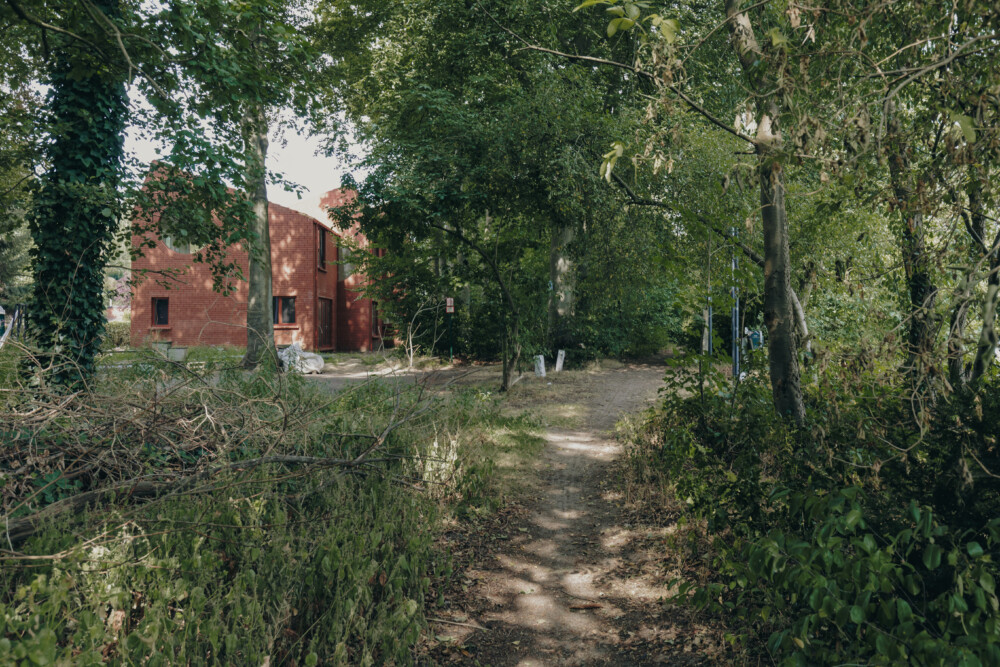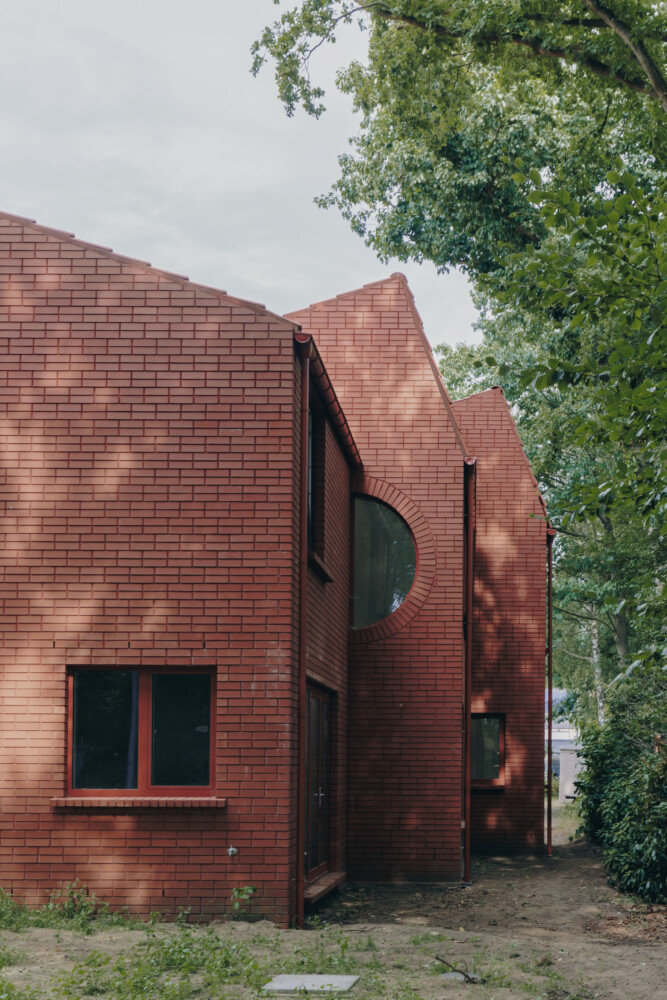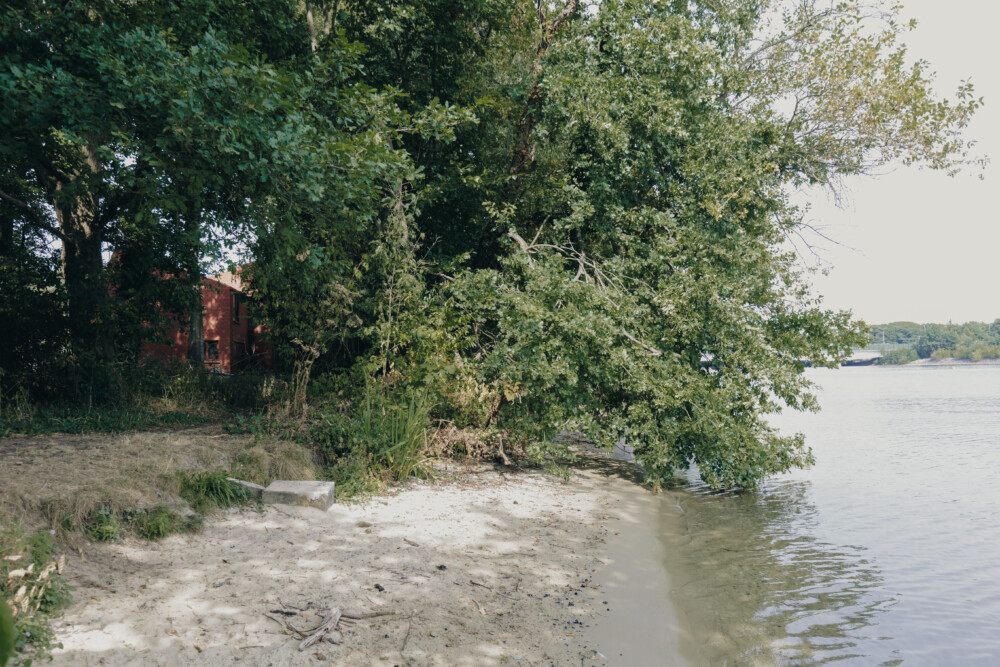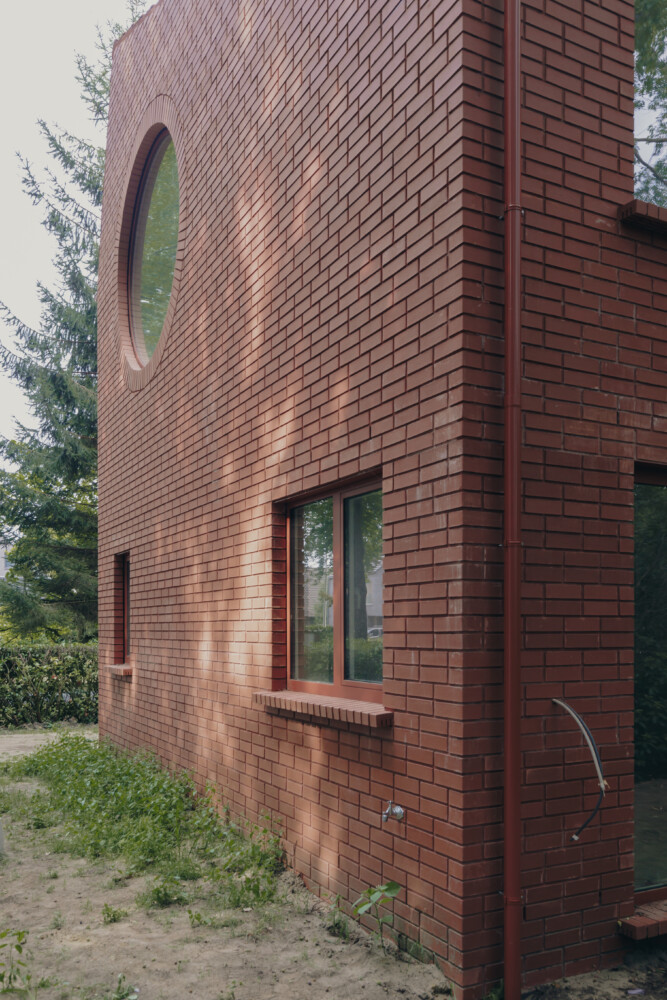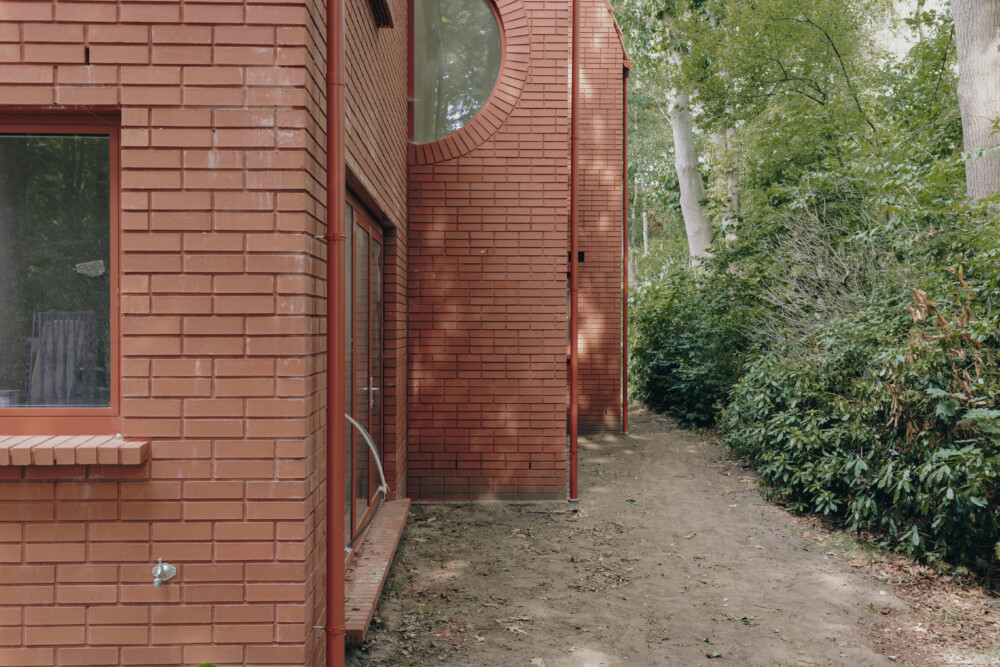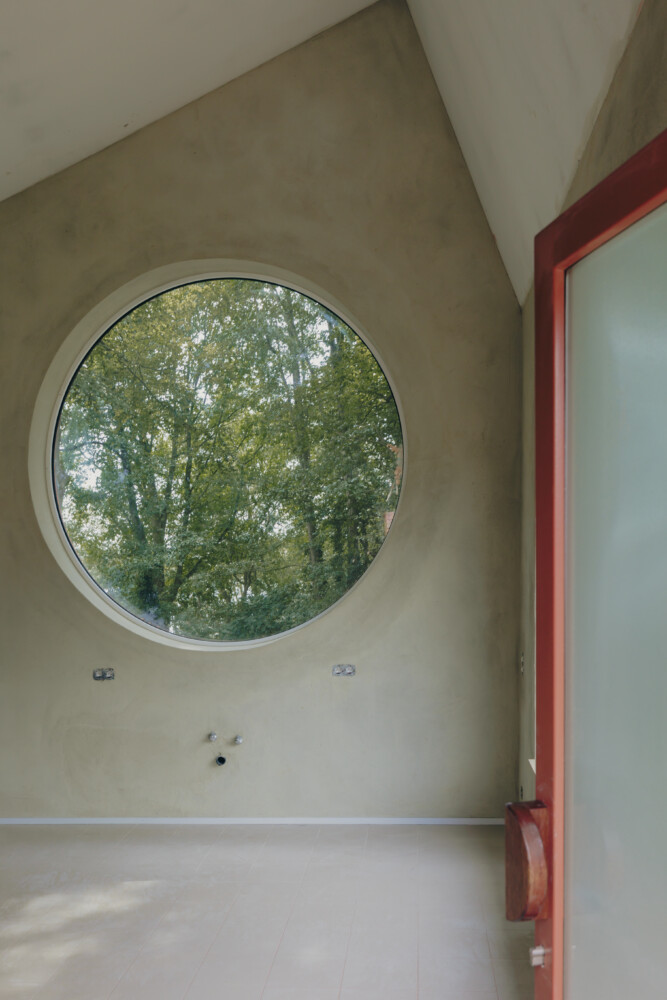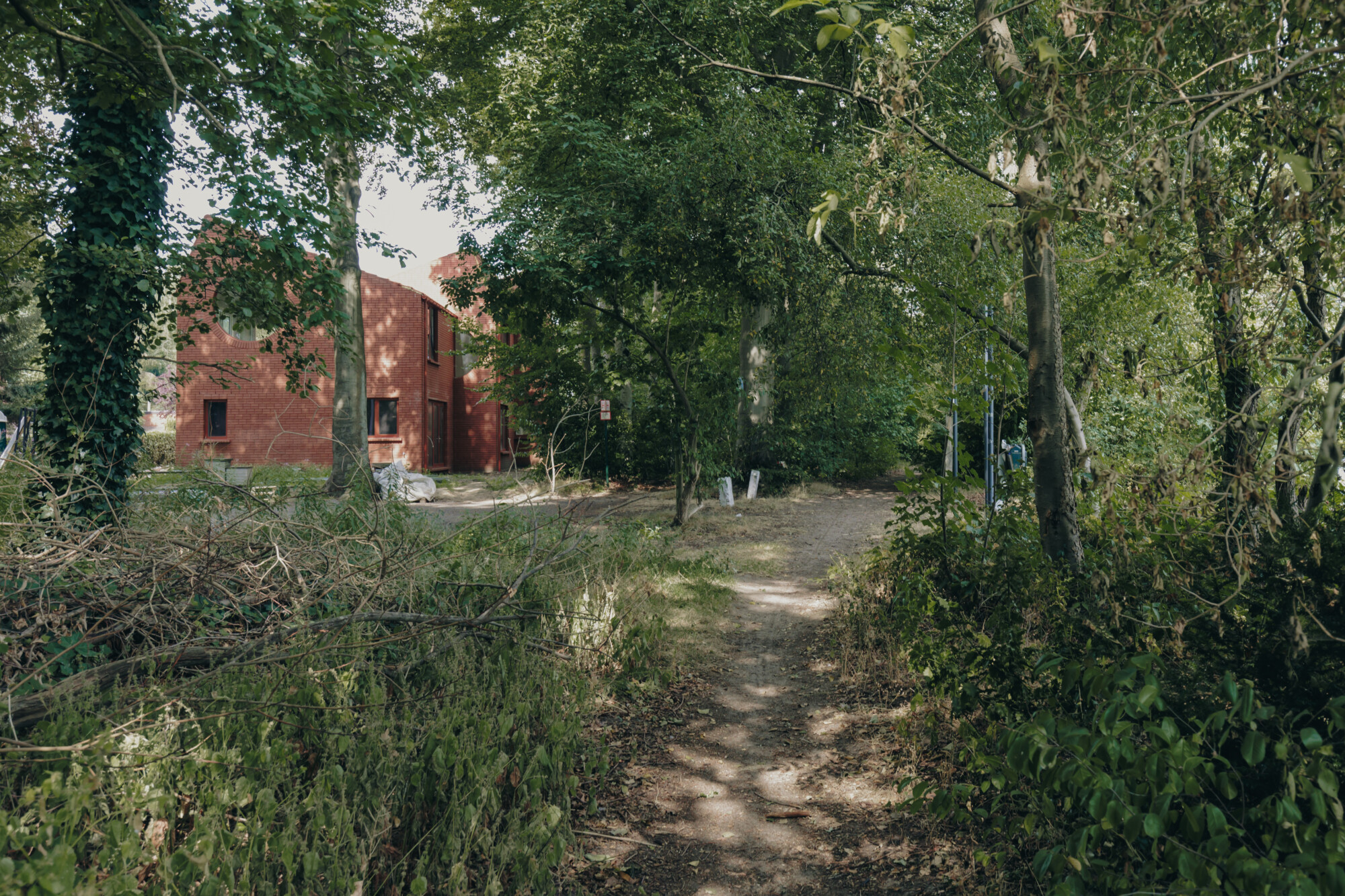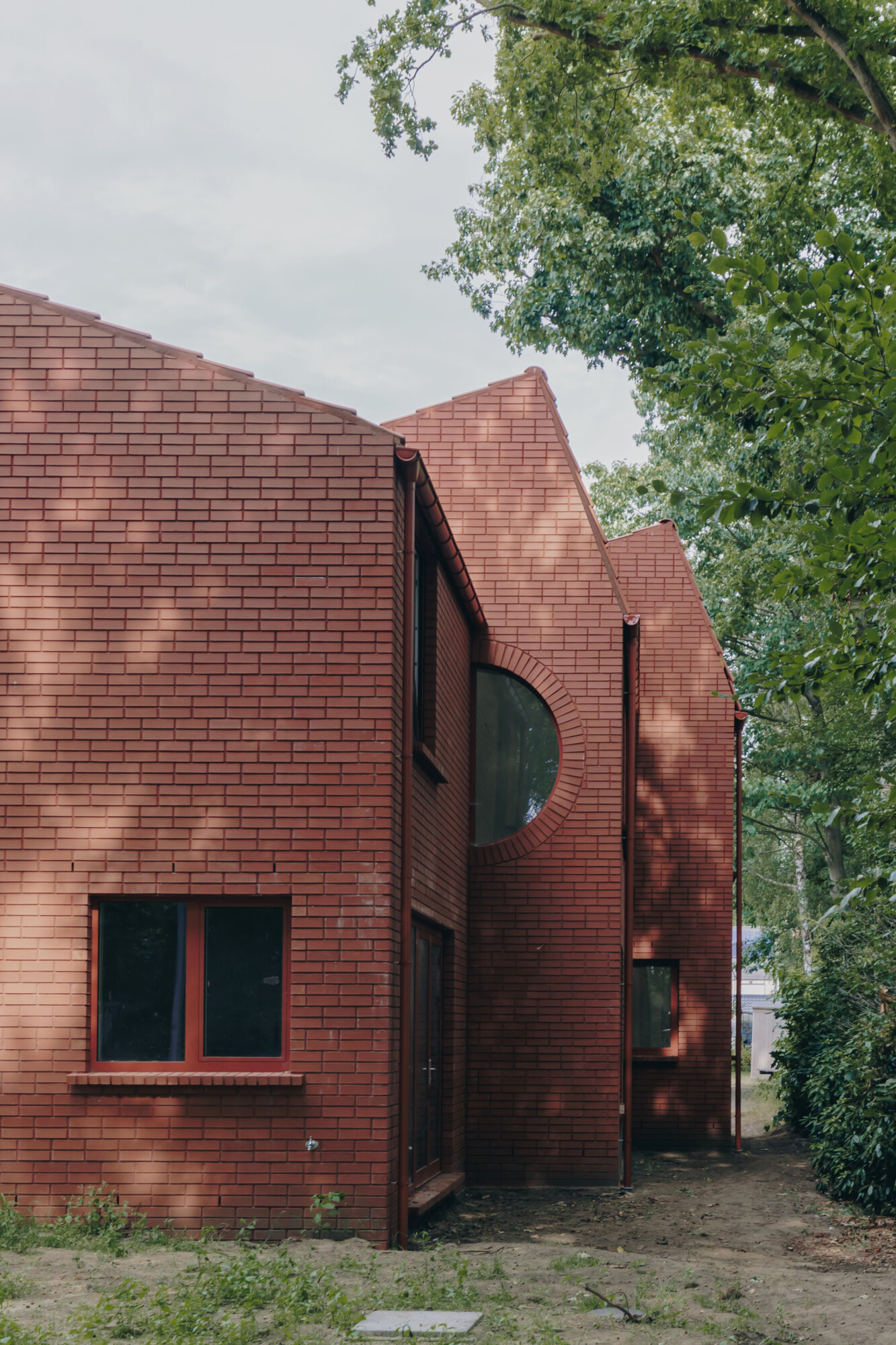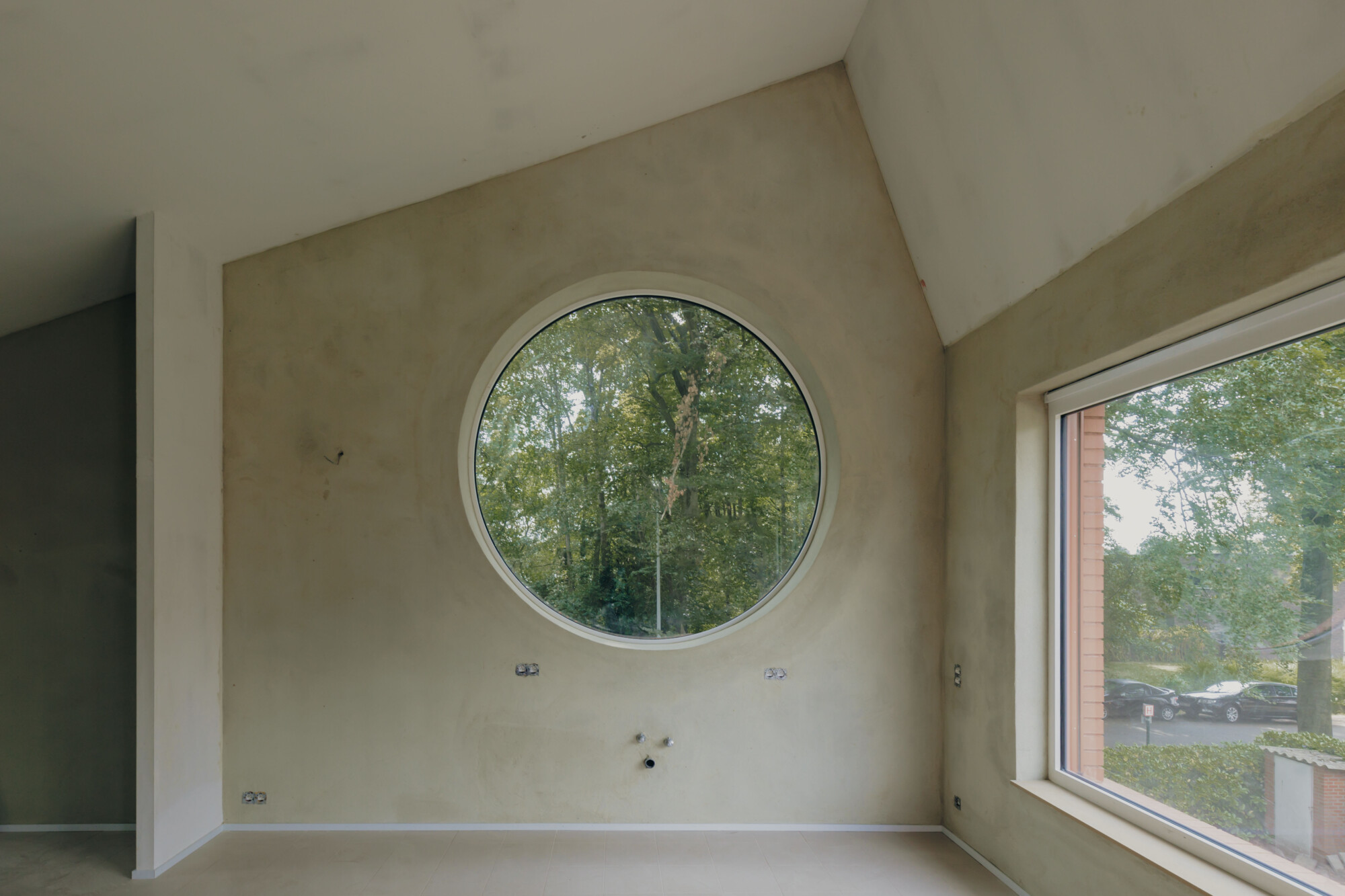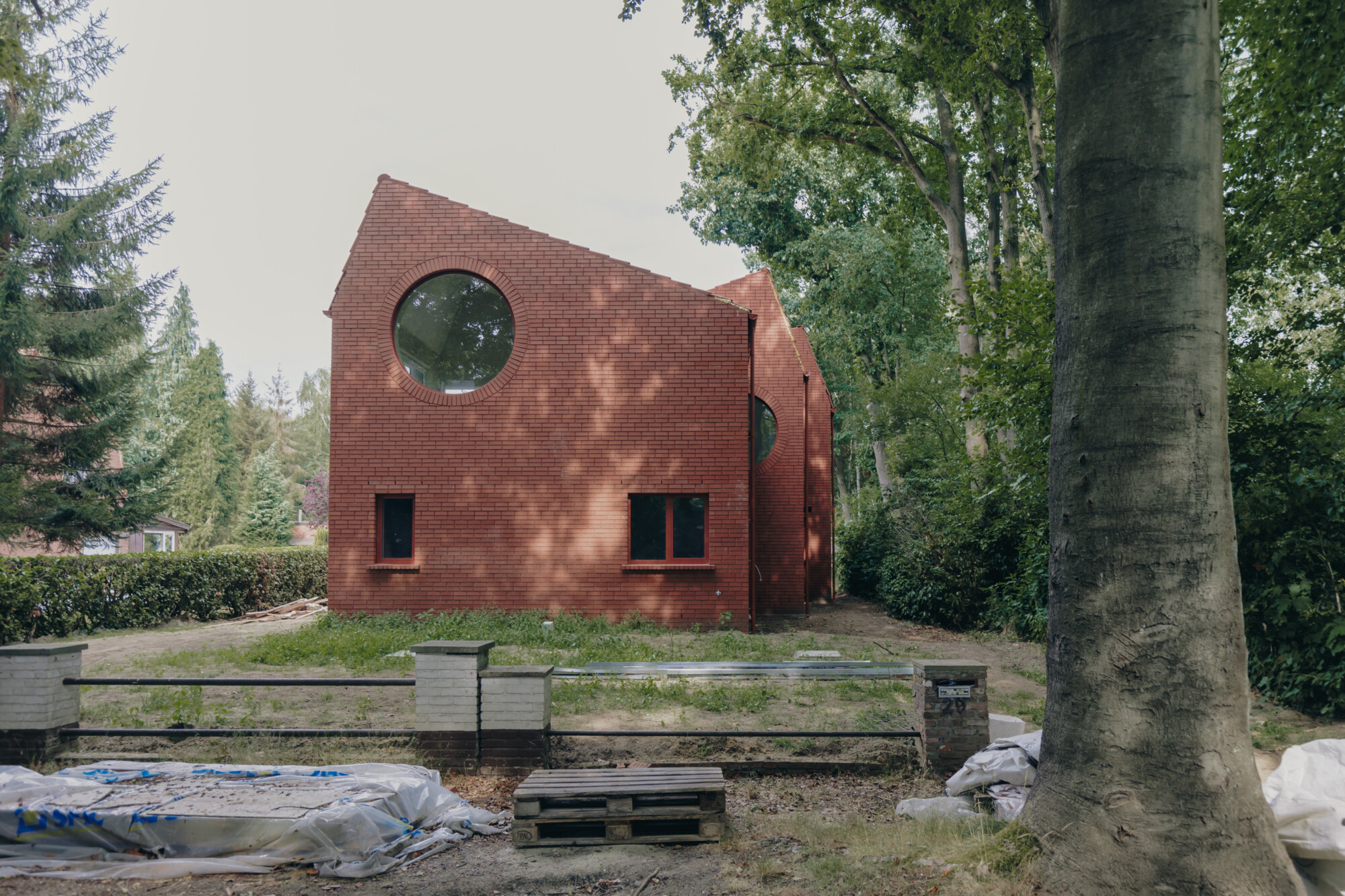Commissioned by a local non-profit organisation providing housing for ex-homeless people, ‘RDS Community House’ is the new shared home for four residents. In addition to the detailed brief from the organisation, the residents have described which surroundings would offer them the most comfortable living conditions. The result is a building consisting of four individual 36 sqm studios, intimate and well-equipped, with views towards outside greenery, purposefully directed away from the common areas to avoid the necessity of curtains. The residents can enjoy the daylight and natural surroundings without feeling deprived from their private sphere – ‘privacy with a view’. The larger communal space, on the other hand, is open on all sides, accessible and visible from the outside, as an invitation for social gatherings.
Throughout the building, from its base to the top, ecological materials are applied to ensure a non-toxic living environment and a durable construction: natural shells from the North Sea for the foundation, wooden timber to form the frame structure, bio-composite lime-hemp concrete and wood wool to insulate the walls, wooden flooring from sustainably managed forests, and everything finished off with a brick façade and tiled roof to guarantee the building’s longevity. Due to prefabricated wall, floor and roof panels the construction process has benefited from being both time and material efficient.
